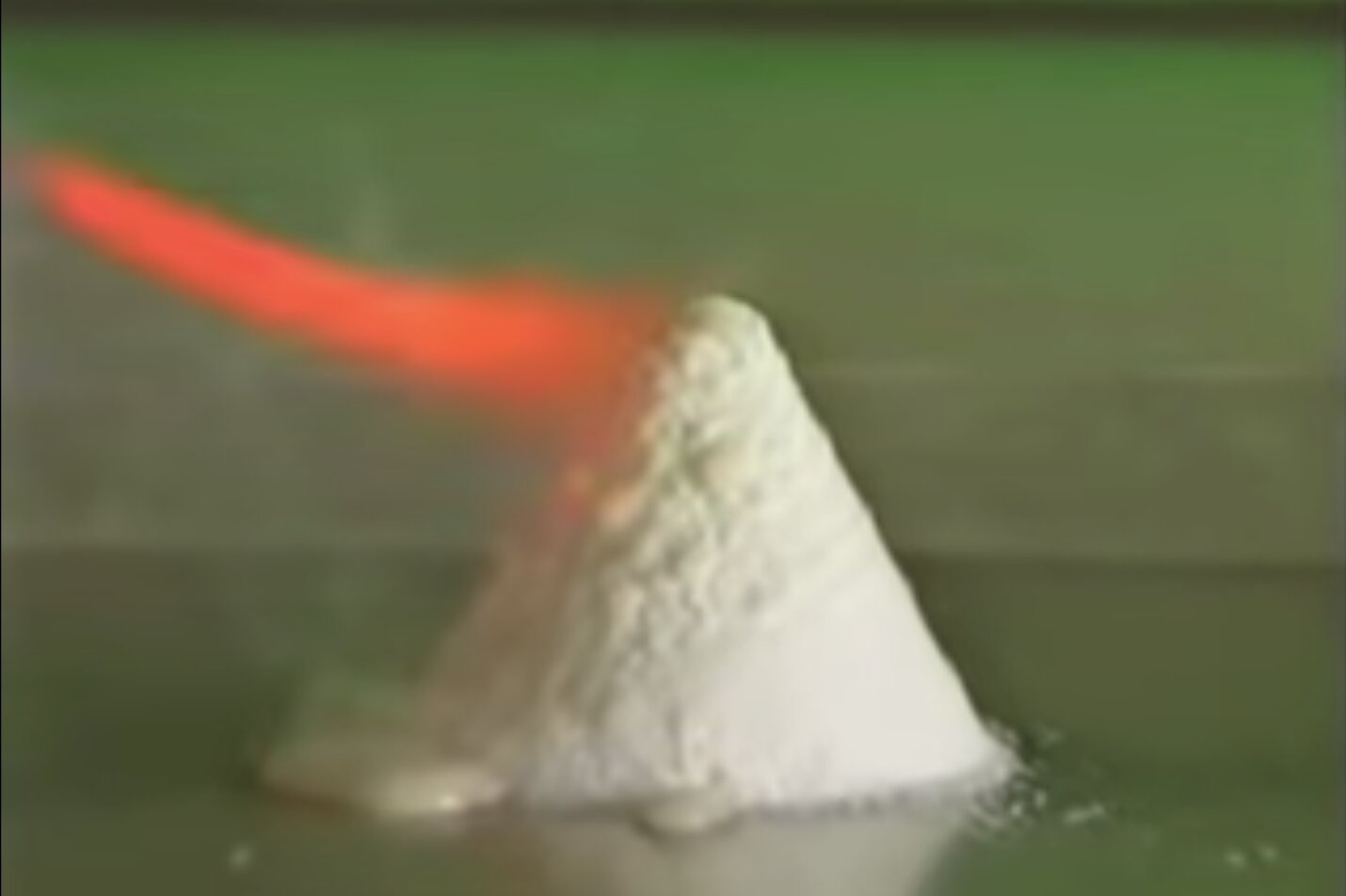
VT Science: Debunking explosive properties of Ammonium Nitrate
Under no circumstances play with any chemicals testing whether they can explode and kill you…Wiley Coyote…
The video demonstrates how ammonium nitrate functions, totally debunking every single claim made by the MSM and right wing conspiracy media in defense of the nation responsible for the nuclear terror attack in Beirut.
This video, and the many like it along with every single chemistry text book proves Beirut was attacked with a nuclear weapon as claimed by, of all people, Donald Trump.
Exploding fertilizer is “anti-science.” As we will prove beyond any question, ammonium nitrate is a possible component in making an explosive and is in itself not explosive whatsoever.
The new and crazy fake science Google/Wikipedia claim is that Beirut blew up because ammonium nitrate allegedly stored there mixed with water, despite no evidence of this whatsoever as it doesn’t rain there, and exploded. Explosions are exothermic reactions.
The truth would be the opposite. When you add ammonium nitrate to water, it acts as a refrigerant and can be used in fire extinguishers.
Someone please call Google and tell them they made a horrible mistake promoting dozens of fake science articles involving explosives that may end up killing people.
“Adding Ammonium Nitrate to Water
Ammonium nitrate consists of ionic bonds packed tightly together. When it comes into contact with water, the polar water molecules interfere with those ions and eventually make them disperse. It takes energy to do this, which is absorbed from the surroundings and makes the solution cold.
While some heat is produced when the ammonium nitrate ions interact with the water molecules (i.e., an exothermic reaction), it is a lot less than what is needed for the water molecules to disperse the strong ionic bonds of the ammonium nitrate, so the overall process is an endothermic reaction, or one that absorbs energy from its surroundings.
It’s for this reason that solid ammonium nitrate is used in commercial cold packs, which are really just a mixture of ammonium nitrate and water. If you hurt yourself, you can mix the contents of the bag together and place it on the injured part of your body. The endothermic reaction of the mixture of ammonium nitrate and water removes heat from the part of the body, “freezing” the painful area.
While this article was written, Google changed its listing of Ammonium Nitrate from “high explosive” to this:
Ammonium nitrate has the chemical formula NH₄NO₃. Produced as small porous pellets, or “prills”, it’s one of the world’s most widely used fertilisers. It is also the main component in many types of mining explosives, where it’s mixed with fuel oil and detonated by an explosive charge. Aug 5, 2020
Whenever fertilizer explodes by itself, it was something else and someone is lying.
This change, despite the date, happened on August 19 at 10:38 New York Time (1038/H)
This is why:
Some simple truths. After the nuclear attack in Beirut, science is now out the window and ammonium nitrate is now a high explosive.
Let’s look at gunpowder. It works the same way. Instead of ammonium nitrate, to aid as a catalyst supplying oxygen in a closed environment to sustain a chemical reaction/explosion, you use potassium nitrate or bird crap.
To that, you add charcoal and sulphur.
In nitroglycerin, you use nitric acid, to which you add sulfuric acid and glycerin which is a hydrocarbon/sugar/fat made from lard. (like FO in ANFO) Are we understanding now?
In TNT, toulene, a form of gasoline (in a way) is nitrated, separated and then re-nitrated and added to a foaming sulfuric acid called oleum. The first “T” refers to a third nitration process which creates a compound that frees nitric oxides which make things blow up really good.
We aren’t going to explain how to build an ammonium nitrate weapon but it is no more explosive than any single component of TNT or nitroglycerin or why your birdcage doesn’t blow your house up when you fail to clean up the bottom of the cage.
CONFEDERATE BAT GUANO KILN, NEW BRAUNFELS. The Texas Hill Country’s abundant caves with their significant bat populations furnished an important resource for the Confederacy during the Civil War.
Bat guano’s high nitrate content provided a key ingredient for the production of gunpowder, and by 1863 a shortage of munitions and other goods precipitated by the Union blockade, prompted the South to seek alternative means of securing various supplies.
The Nitre and Mining Bureau of the Confederacy authorized local industrialists to mine bat guano from area caves in order to extract saltpeter. The Thomas Anderson mill in northwest Travis County, for example, was designated the Travis Powder Company in 1863 and obtained guano from area caves to extract saltpeter and mix it with sulfur and charcoal (produced by burning cedar trees) to manufacture gunpowder.
A similar operation occurred near Concan in Uvalde County where a cave and its resident bat population fueled that region’s saltpeter industry. Miners utilized mule-drawn railcars to transport the guano.
By summer 1863 the Nitre and Mining Bureau, Western District, Texas, authorized William Seekatz and Associates to operate a guano kiln in New Braunfels in South Central Texas. Capt. William Seekatz, one of the pioneers of New Braunfels, along with citizens Ed Braden, Ed Dreiss, Jack Marshall, and Joe Ney, constructed a limestone oven near the headwaters of the Comal River.
On July 17, 1863, the Neu-Braunfelser Zeitung stated that the men were waiting for the Confederate government to supply kettles for operations to begin.
Guano was mined and hauled from Brehmer’s Cave, some three miles west of the oven as well as from a cave in the Cibolo area. From the guano, the kiln produced an output of 100 pounds of pure saltpeter daily.
According to the Neu-Braunfelser Zeitung on April 29, 1864, 100 pounds of guano were needed to produce four pounds of saltpeter—requiring the shoveling of 2,500 pounds of bat guano a day to fill the quota of 100 pounds of saltpeter crystals. Regular production continued presumably until the end of the war.
In 1938 Frank P. Seekatz, the son of William Seekatz, erected a granite marker to commemorate the operations that had begun seventy-five years earlier. The marker stands by the remnants of the guano kiln in present-day Landa Park.
ABOUT VT EDITORS


